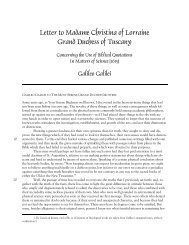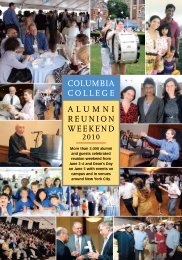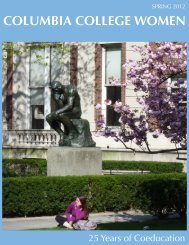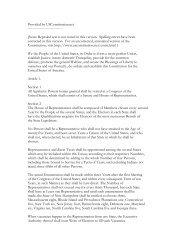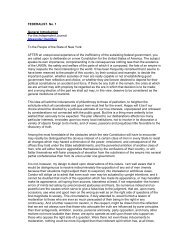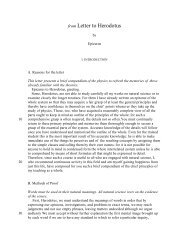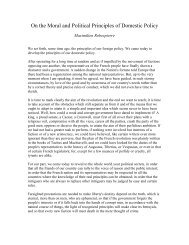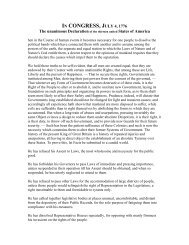Japan Storm - Columbia College - Columbia University
Japan Storm - Columbia College - Columbia University
Japan Storm - Columbia College - Columbia University
Create successful ePaper yourself
Turn your PDF publications into a flip-book with our unique Google optimized e-Paper software.
JAPAN AFTER THE STORM COLUMBIA COLLEGE TODAY<br />
A member of the <strong>Columbia</strong> faculty since 1968, Gerald<br />
Curtis is the author of numerous books on <strong>Japan</strong>ese<br />
culture and politics, written in both English and Japa-<br />
nese. He was director of <strong>Columbia</strong>’s Weatherhead East<br />
Asian Institute for a total of 12 years between 1974<br />
and 1990. In 2004, he was awarded the Order of the<br />
Rising Sun, Gold and Silver Star by the Emperor of<br />
<strong>Japan</strong>, one of the highest honors bestowed by the Japa-<br />
nese government. Curtis visited the disaster zone on<br />
<strong>Japan</strong>’s Northeast Pacific coast in May to prepare a<br />
documentary for <strong>Japan</strong>ese television and he returned<br />
there numerous times in the subsequent months.<br />
There are towns along the Pacific coast in Tohoku,<br />
the region northeast of Tokyo, with<br />
names like Ofunato and Rikuzen Takada<br />
in Iwate prefecture and Minami Sanriku<br />
and Watari in Miyagi prefecture, that until<br />
March 11 of this year meant little more to<br />
most <strong>Japan</strong>ese than the names of towns<br />
along the Maine coast mean to most Americans.<br />
Many people knew these towns only as places from where<br />
<strong>Japan</strong>ese got a lot of their fish, and that they have a harsh winter<br />
climate and hard-working people of few words.<br />
The 9.0 magnitude earthquake and the ensuing tsunami that<br />
struck Tohoku on March 11 changed all that. Now the names of<br />
these towns — towns that I visited over several days at the beginning<br />
of May — and others on the northeast coast evoke images<br />
of miles upon miles of devastation where houses, ports,<br />
fishing boats, merchant shops and small factories, rice fields and<br />
hot houses for vegetables and strawberries have disappeared.<br />
The landscape had been turned into an endless vista of debris<br />
punctuated by the occasional presence of a boat or car perched<br />
on the roof of some concrete structure that somehow did not<br />
collapse under the incredible force of the tsunami that left more<br />
than 20,000 people dead or missing. The tsunami damaged or<br />
destroyed 125,000 buildings and spread an estimated 27 million<br />
tons of debris over a wide expanse of the northeast Pacific coast.<br />
In Miyagi prefecture alone, the debris tonnage was the equivalent<br />
of 23 years of the prefecture’s garbage.<br />
Few lives were lost as a result of the earthquake itself. <strong>Japan</strong><br />
has gone to extraordinary lengths to adopt strict building codes,<br />
early warning systems, evacuation drills and other measures to<br />
protect people and property in the event of a major earthquake.<br />
For example, <strong>Japan</strong>’s bullet train system has a network of 97<br />
earthquake detectors; about 15 seconds before the earthquake hit<br />
the tracks, automatic brakes stopped all 27 bullet trains that were<br />
running. There was extensive damage done at many places along<br />
the route to stations, bridges and tunnels — but no lives were lost.<br />
In Tokyo, high-rise buildings swayed — and did so for so many<br />
minutes that it made some people feel as though they were seasick<br />
— but none collapsed. In the north, the earthquake knocked<br />
out electricity, gas and water lines, but power was restored relatively<br />
quickly in areas that were beyond the reach of the tsunami,<br />
and deaths and injuries were relatively few.<br />
If there had not been the tsunami, the lead story about March<br />
11 would have focused on the remarkably successful earthquake<br />
disaster prevention measures <strong>Japan</strong> has adopted.<br />
Earthquake damage to the train station at Sendai, Miyagi prefecture’s<br />
capital, had been repaired by the time I got there on<br />
May 4, a few days after bullet train service resumed along<br />
the entire Tokyo-Aomori route. Neither at the train station nor anywhere<br />
else in the city center was there evidence that Sendai had<br />
been violently shaken by the strongest earthquake in its history.<br />
The landscape had been turned into an endless vista of debris<br />
punctuated by the occasional presence of a boat or car perched on<br />
the roof of some concrete structure that somehow did not collapse.<br />
WINTER 2011–12<br />
22<br />
As soon as I arrived in Sendai, I headed to the airport. Driving<br />
toward the ocean from the city center, everything looked normal<br />
for the first 10 kilometers or so. Then the scenery suddenly turned<br />
bizarre: a smashed car sitting in the middle of a rice field, wood,<br />
metal and other debris scattered here and there. The closer I got<br />
to the ocean, the more destruction I saw: a two-story building, for<br />
example, whose walls were still intact but without any windows<br />
on either the first or second floor. The tsunami had blown them<br />
out, washing away most of the things that had been inside and<br />
drowning people who were living there. I could see large characters<br />
painted at the top of what had been the building’s entrance.<br />
They indicated that this had been a community old-age home.<br />
There was an incredible number of cars tossed about helterskelter<br />
throughout the area along the coast, many so crushed and<br />
mangled that it looked as though they had been involved in headon<br />
collisions. One car was perpendicular, with the front half of its<br />
hood buried in the ground as though someone had tried to plant<br />
it. Others were upside down; one looked as though it was trying to<br />
climb a tree. The Self Defense Forces (SDF) had been collecting and<br />
sorting the debris and piling it up — wood here, scrap metal there<br />
— for eventual disposal. Every so often along the side of a road<br />
there would be a stack of ruined automobiles piled on top of each<br />
other and taking up the equivalent of half a New York City block.<br />
Since automobiles are virtually the sole mode of transportation for<br />
people who live in this coastal part of Sendai, it is not unusual for a<br />
household to have several cars for family members to commute to<br />
work. Never have I seen so many ruined automobiles.<br />
The area around the airport, the large Sendai shipping port,<br />
the Wakabayashi ward that suffered the most death and destruction<br />
in Sendai, and everything in between was a scene of utter




